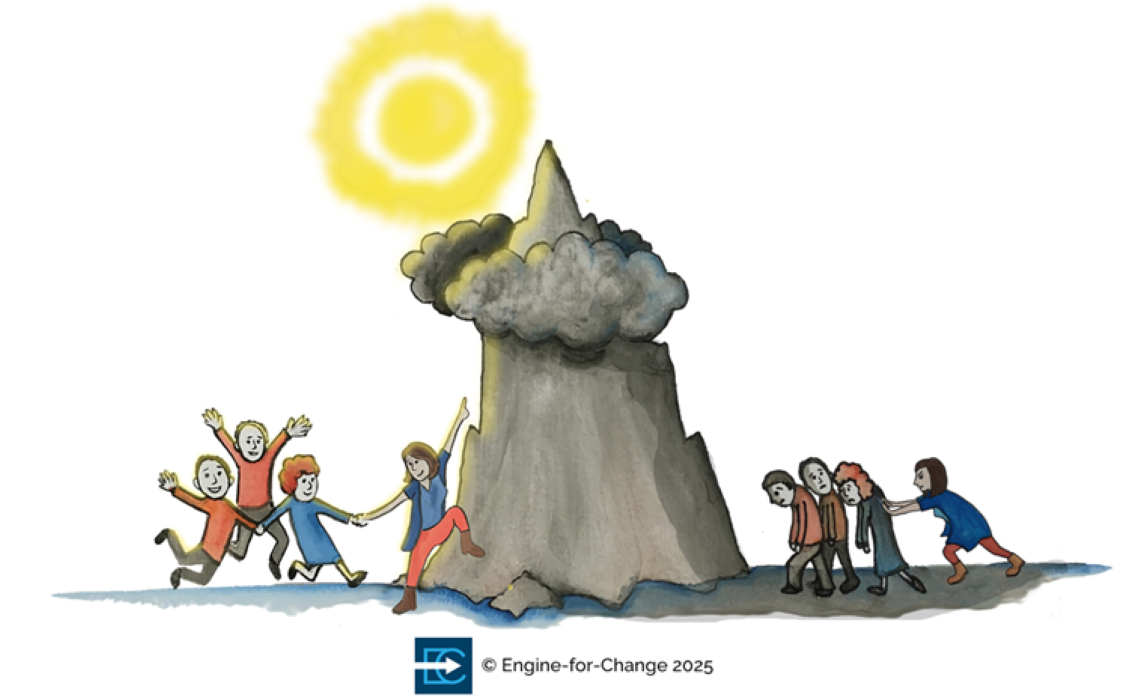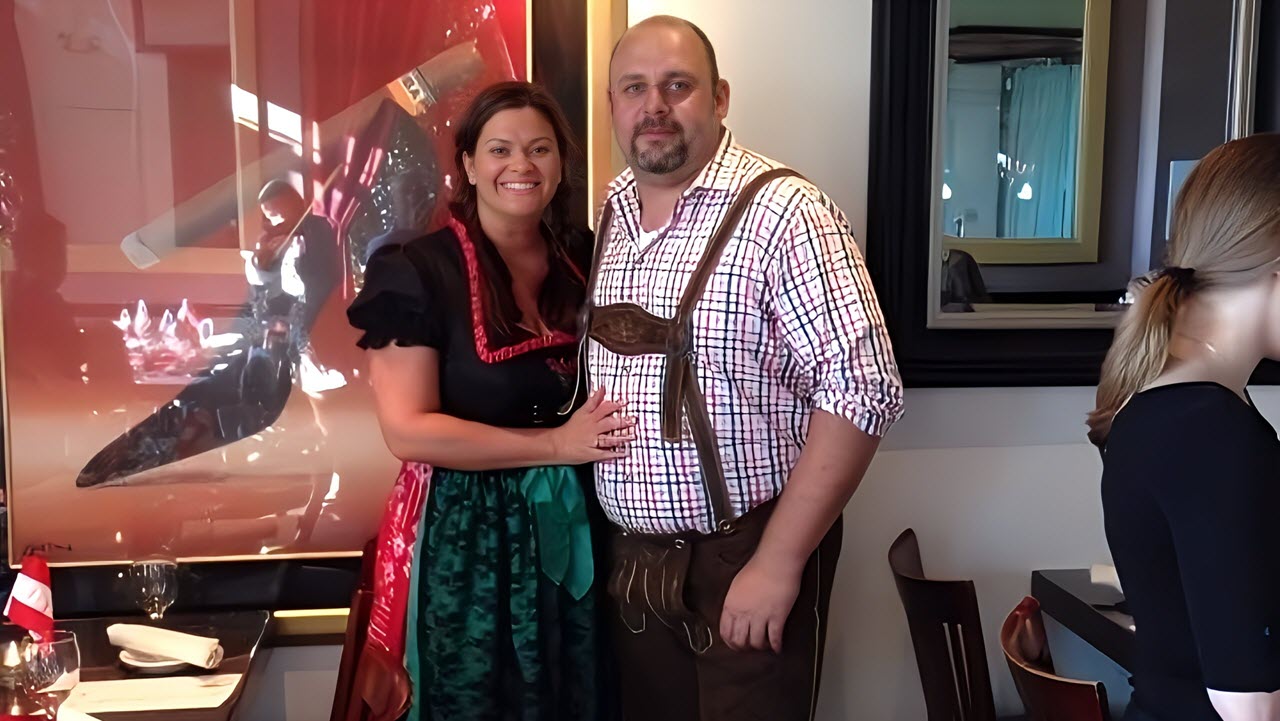While participating in the master’s program exclusively for sales by Consalia, Ltd., and Middlesex University, ‘MSc Leading Sales Transformation’, I uncovered that most change models today are
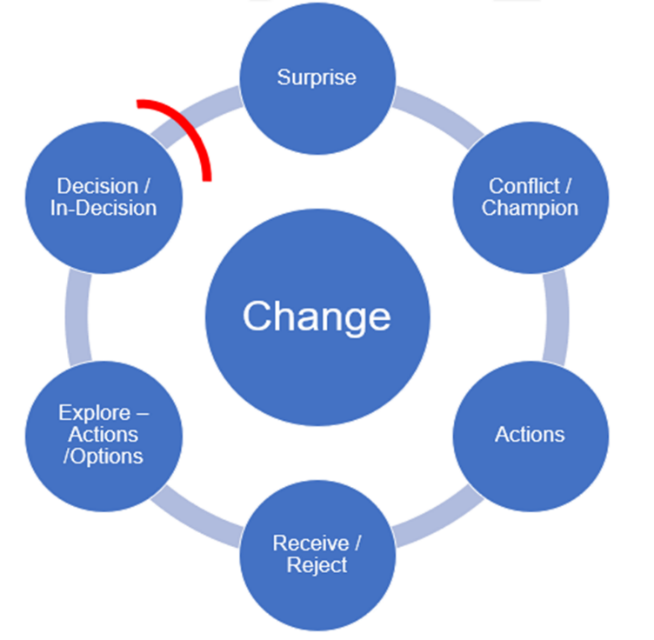
Figure 1: SCARED model
utilized and implemented on behalf of organisational change to benefit organisations and corporations. There are a few of the major change models focusing on the individual, but they tend to be prescriptive towards a negative reaction and don’t allow for personal choice. The element of positive or neutral emotions are typically left out. Next to none answer that question of “So What can I do about it?” I argue that ‘Personal Change’ must be the 1st element of focus to bring the individual through the change process for themselves. Then, perhaps, organizational change will have a greater chance for success.
SCARED-SO WHAT™ is a new change model that is designed to incorporate personal choice via positive, neutral, or negative change experiences that a person may find themselves involved within a certain situation. The change may be self-imposed or thrust upon them with or without notice.
The model is designed to help a person to stop and ask themselves “Where am I within this change process?”
Looking at the first part (in Figure 1), SCARED is a non-linear model that can resemble change in real life, at work or at home moments, where people identify with potential fear or excitement of a change. Remember, while the fear of change is called Metathesiophobia, you do not have to take the model literally. You do not have to be “Scared” for the model to work. You’ll also notice that over time, people can express neutral, positive, or negative reactions in their behaviour as each element applies to them in the cycle.
Surprise can be positive or negative. People can be Conflicted or Champion the change. Actions will occur when people begin to ask questions or seek clarity of the change. People can become Receptive or flat out Reject the change being imposed upon them. Next, one might Explore options or a way forward before coming to a Decision point.
In the SCARED model, during a change process, the goal is to break out of the fear of change with a favourable decision point. If one cannot, then they may repress themselves back into the SCARED cycle until they can. If they remain inside this cycle it could be due to indecision or absence of information.
An example of the SCARED model over time (in Figure 2), and energy is represented here. Note that the stages will move up and down depending on the persons experience. The process is not linear, and one may skip or bypass a portion of the cycle. The experience and results will be personal to the individual going through the change process.
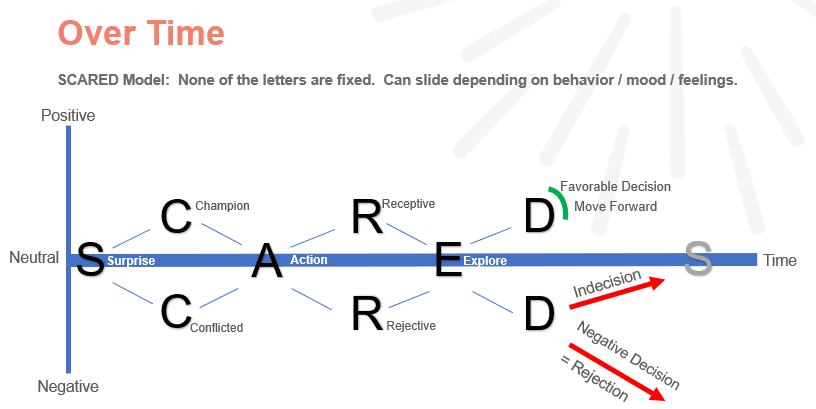
Figure 2: SCARED over time & energy
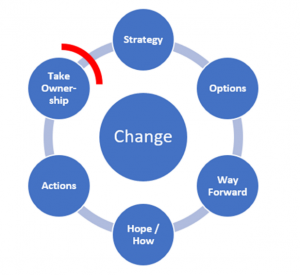
Figure 3: SO WHAT
The SO WHAT part of the model picks up where other models drop off and helps the person involved in the change to formulate their own “So What” can they do about the change.
In the SO WHAT model (as seen here in Figure 3), Strategy may be the first step to begin with. And to add to your strategy you may need Options or opportunities to enhance that change management strategy. Once you have your strategy and options, you quickly assess if this is the proper Way forward for you. If not, then go back and rework your plan.
If yes, then you stop and do a sense check to see if you have Hope or know fully How you can move forward. Once you are sure of your plan then you need to take the Actions necessary to enable your plan. Taking ownership will ensure that your plan succeeds. This is detailed further in the SO WHAT templates to help one complete their SO WHAT plan. The combined models for a simple personal change-management process comes together as SCARED – SO WHAT™.
The SO WHAT template below can help you as a guide to formulate your own SO WHAT. Use this to prompt your thinking in making your own plan.
STRATEGY:
- Identifying and clarifying the change
- Steps to include in the change
- Processes and People that need to be involved in the change – Who needs to be involved
- Needs / constraints / support mechanisms / budgets / tools
- Timelines
OPTIONS:
- Identifying other options and opportunities – Socialize the plan and gain support
- People and processes necessary to support the plan – fact check, and sense check the plan
- Workshops may be necessary (Small or Large) for Idea generation / collaboration
- Support needed / processes and people
WAY FORWARD:
- Identifying who will need to be in the Review / Approval process
- Identifying stakeholders – Blockers / Supporters
- Workshops or support needed
HOPE/HOW:
- Do I have the right plan in place?
- Do I have the others buy in and support or are they still stuck in the SCARED model?
- Do I have the leadership support / approval of my Strategic plan and Way Forward?
- Note: I may need to revisit the Strategy, Options and recalculate my Way Forward.
- If I’m ok with the above, then I can move forward.
ACTIONS:
- What actions do you need to take?
- Who do you need to help take this plan forward now that it’s approved and ready?
- Begin your plan to include:
- Leadership support launch, Communication process, Implementation process
- Key Performance Measures, Timelines
TAKE OWNERSHIP:
- Holding myself accountable
- Sharing and communicating your vision
- Checking and supporting the implementation leaders
- Reporting out progress and continued support of those involved
- Checking in with people involved to ensure they have what is necessary (Might be with yourself)
- Seeing your plan through and asking for help when necessary
- Celebrate success / and or Regroup if necessary to bring people back into supporting for success
For any questions, comments or feedback on the SCARED-SO WHAT™ methodology, please email Grant Van Ulbrich directly at ScaredSoWhat@yahoo.com.


